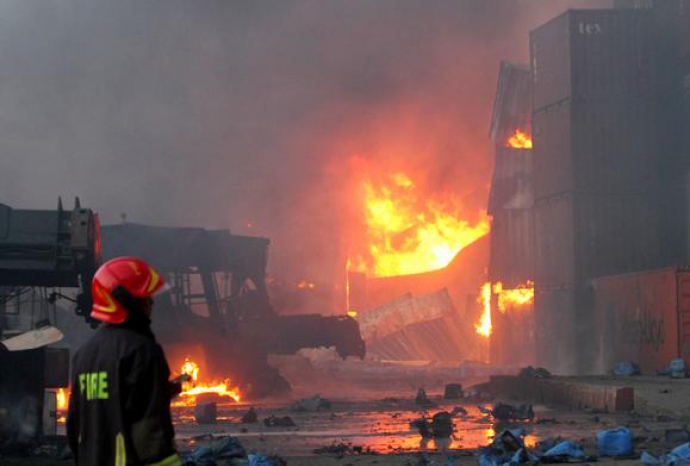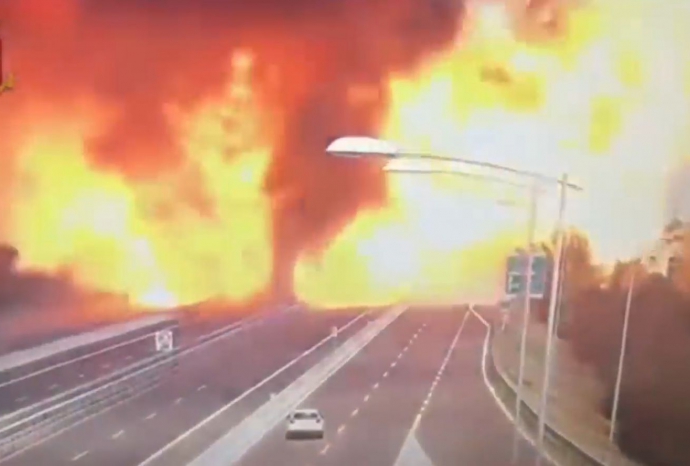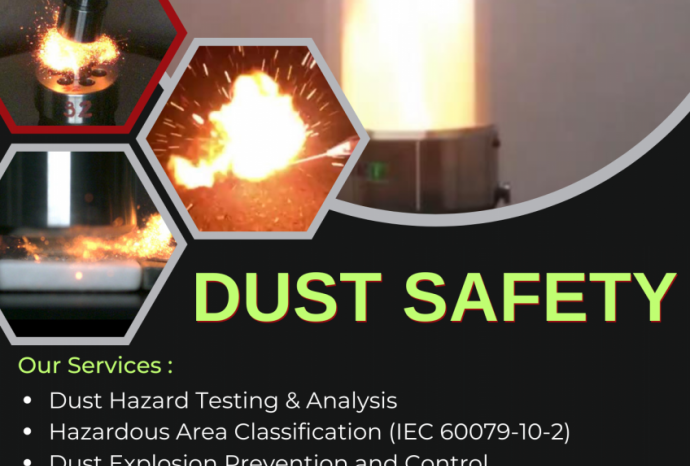HOT WORK AND FIRE EXPLOSION RISKS IN INDUSTRY
In the video below, a serious fire and explosion incident occurred at an industrial facility. The initial cause was determined to be heat-generating work (such as welding, cutting, grinding) that created sparks, igniting residual oil vapor in a transformer and leading to an explosion. We witness the tragic consequences of unsafe hot work practices.
What is Hot Work? Hot work refers to activities involving the use of open flames, sparks, or high temperatures, such as welding, cutting, grinding, and heating, in industrial settings. It is an essential part of many industries, but it poses a high risk of fire and explosion if not strictly controlled.
Fire and Explosion Risks from Hot Work: Sparks and High Temperatures: The nature of hot work generates sparks and high temperatures, which can easily ignite flammable materials such as oil, grease, gas, and metal dust. Work Environment: Industrial environments often contain flammable substances and volatile liquids, creating favorable conditions for fire spread. Equipment and Tools: The use of unsafe, damaged, or poorly maintained equipment and tools also increases the risk of fire and explosion. Human Factors: Employees lacking knowledge and skills in fire safety and not adhering to work procedures are also a risk factor.
Fire and Explosion Risk Management - The Essential Solution: To prevent and minimize the risk of fire and explosion in hot work, risk management is key:
Conclusion: Hot work is an indispensable activity in many industries, but it carries a high risk of fire and explosion. Scientific and rigorous fire and explosion risk management is a prerequisite to ensure the safety of workers, assets, and the environment.
Link Video: https://fb.watch/t4w-Y9J8Ln/
What is Hot Work? Hot work refers to activities involving the use of open flames, sparks, or high temperatures, such as welding, cutting, grinding, and heating, in industrial settings. It is an essential part of many industries, but it poses a high risk of fire and explosion if not strictly controlled.
Fire and Explosion Risks from Hot Work: Sparks and High Temperatures: The nature of hot work generates sparks and high temperatures, which can easily ignite flammable materials such as oil, grease, gas, and metal dust. Work Environment: Industrial environments often contain flammable substances and volatile liquids, creating favorable conditions for fire spread. Equipment and Tools: The use of unsafe, damaged, or poorly maintained equipment and tools also increases the risk of fire and explosion. Human Factors: Employees lacking knowledge and skills in fire safety and not adhering to work procedures are also a risk factor.
Fire and Explosion Risk Management - The Essential Solution: To prevent and minimize the risk of fire and explosion in hot work, risk management is key:
- Risk Assessment: Identify potential hazards, assess the level of risk and the likelihood of incidents.
- Safety Planning: Develop a detailed work plan, including preventive measures, risk control, and incident response procedures.
- Monitoring and Inspection: Regularly inspect and monitor hot work processes to ensure compliance with safety regulations.
- Training and Education: Raise awareness, knowledge, and skills in fire safety for employees.
- Use of Safety Equipment: Provide adequate and high-quality fire protection equipment and personal protective equipment.
Link Video: https://fb.watch/t4w-Y9J8Ln/




